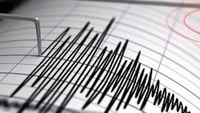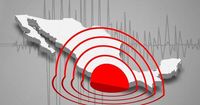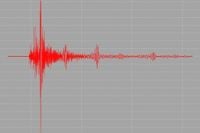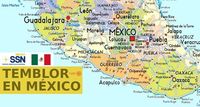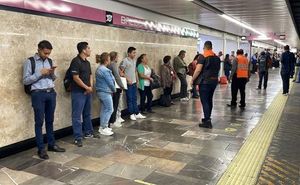Mexico is renowned for its seismic activity, largely due to its location on the Pacific Ring of Fire, which makes it susceptible to earthquakes and volcanic eruptions. The country sits at the convergence of five tectonic plates: the Caribbean, Pacific, North American, Rivera, and Cocos plates. This unique geographical positioning leads to an average of four earthquakes daily, as reported by the Servicio Sismológico Nacional (SSN) and corroborated by the United States Geological Survey (USGS).
Historically, Mexico has experienced some of the most powerful earthquakes in September, with magnitudes exceeding 7.0 on the Richter scale. Significant earthquakes include those on September 19 and 20, 1985, with magnitudes of 8.1 and 7.6, respectively, and the devastating events on September 7 and 19, 2017, which recorded magnitudes of 8.2 and 7.1. Another notable earthquake occurred on September 7, 2021, with a magnitude of 7.1. These seismic events are often remembered for the extensive human and material losses they caused.
On April 21, 2025, the SSN reported several earthquakes across Mexico, particularly in states known for their seismic activity, such as Oaxaca, Guerrero, and Chiapas. The most significant of these tremors was a 4.0 magnitude earthquake that struck 19 km east of Unión Hidalgo, Oaxaca, at 15:22 Central Time, with a depth of 101.4 km. Other notable earthquakes included:
- A 3.3 magnitude quake registered 13 km southeast of Pinotepa Nacional, Oaxaca, at a depth of 11.3 km.
- A 3.5 magnitude tremor occurred 14 km north of San Marcos, Guerrero, at a depth of 32.7 km.
- A 3.8 magnitude earthquake struck 125 km southwest of CD Hidalgo, Chiapas, at a depth of 5.1 km.
- A 3.2 magnitude quake was recorded 4 km northeast of Allende, Veracruz, at a depth of 16.1 km.
In total, the SSN reported around 18 seismic events on the morning of April 21, with Guerrero experiencing the highest frequency of tremors. The agency continues to monitor seismic activity across the nation, providing updates to keep the public informed.
In light of this ongoing seismic activity, the Centro Nacional de Prevención de Desastres (CENAPRED) urges residents to remain vigilant and prepared for earthquakes. Recommendations include:
- Regularly checking the safety of your home’s infrastructure.
- Installing secure locks, cabinets, and shelves.
- Storing fragile items in safe locations.
- Maintaining a well-stocked first aid kit.
- Establishing a family meeting point in case of emergencies.
- Educating family members on how to shut off gas, electricity, and water.
During an earthquake, CENAPRED advises individuals to:
- Stay away from windows, mirrors, and sharp objects that may fall.
- Seek shelter under a sturdy table or door frame.
- Cover your head and neck with your arms.
- Avoid using elevators and take the stairs instead.
- Do not rush out of a building while the shaking is ongoing.
Following an earthquake, individuals should check for injuries, provide first aid if necessary, and refrain from using mobile phones unnecessarily to avoid overloading the lines. It is also crucial to inspect your home for structural damage and ensure that gas, electricity, and water supplies are secured.
In Mexico City, the Sistema de Alerta Sísmica Mexicano (SASMEX) is activated for significant tremors. However, there are instances where minor tremors, known as microsismos, do not trigger alerts. These are typically low-intensity quakes that may not exceed 3.0 on the Richter scale and often go unnoticed. SASMEX activates when:
- A quake exceeds 5.0 and occurs within 170 km.
- A quake reaches 6.0 and is more than 350 km away from the capital.
- A quake surpasses 5.5 within 350 km.
Despite advancements in earthquake monitoring and alert systems, experts stress that predicting earthquakes remains impossible. The SSN emphasizes that while Mexico is prone to seismic activity, preparedness and awareness are vital for minimizing risks and ensuring safety.
As Mexico navigates its seismic landscape, the importance of community awareness and disaster preparedness cannot be overstated. The country has a rich history of resilience in the face of natural disasters, and ongoing education about earthquake safety remains critical.
In conclusion, Mexico's geological reality is one of constant vigilance against earthquakes. The recent seismic activity serves as a reminder of the need for preparedness, education, and community resilience in the face of these natural phenomena.
